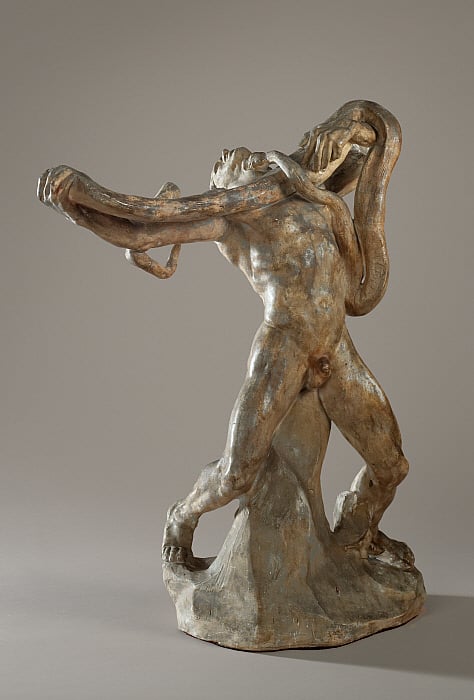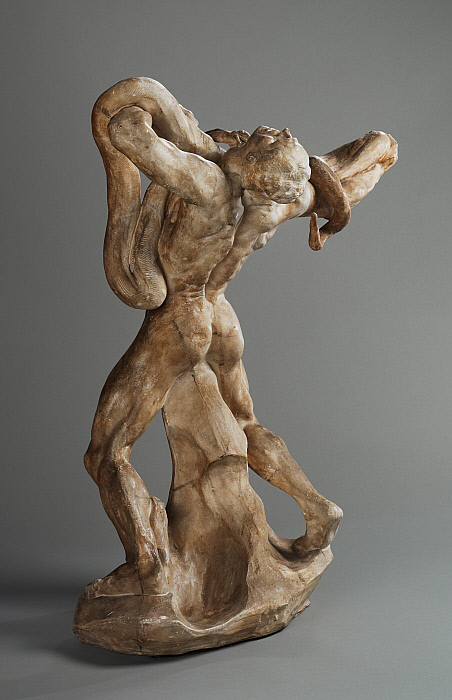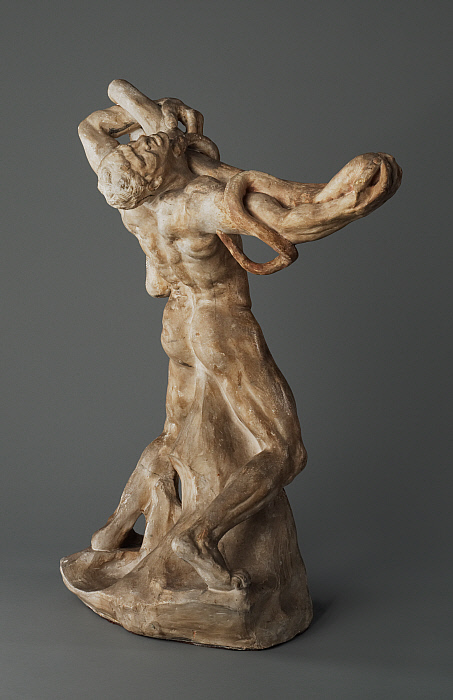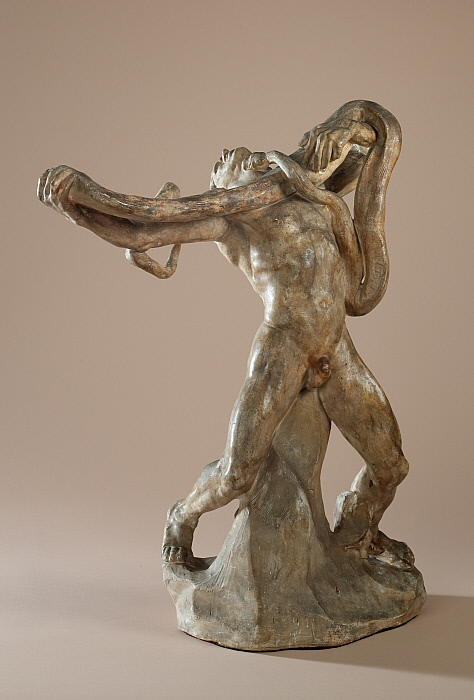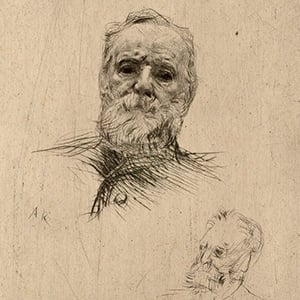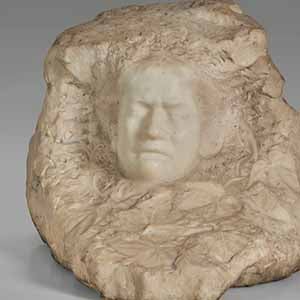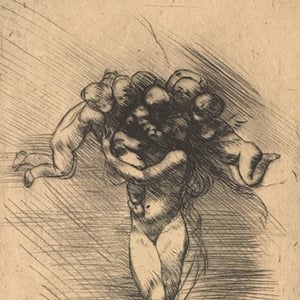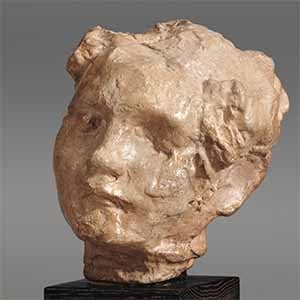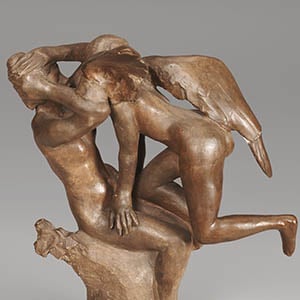Auguste Rodin
French, 1840–1917
Man with Serpent
1885
When this sculpture is viewed from the front, the outcome of the struggle is uncertain. Only from the side can we see the serpent delivering a fatal bite to the man’s neck. The man’s pose was adapted, at the request of a collector, from that of a falling figure in a monumental sculpture on which Rodin worked for 37 years but never finished—the Gates of Hell. Plaster casts like this one were an important part of the process of transforming a clay model into a finished bronze.
| Medium | plaster |
| Dimensions | 27 1/2 × 22 × 11 7/8 in. (69.9 × 55.9 × 30.2 cm) |
| Object Number | 1955.1023 |
| Acquisition | Acquired by Sterling and Francine Clark before 1955 |
| Status | On View |
Image Caption
Auguste Rodin, Man with Serpent, 1885, plaster. Clark Art Institute, 1955.1023
Select Bibliography
Provenance
Antony Roux (1833–1913), Marseille, Monte-Carlo, Paris (1887–1914, his sale, Paris, May 19–20, 1914, no. 146, sold to M. Knoedler, agent for Robert Sterling Clark, who purchased for his brother, Stephen Clark); Stephen Carleton Clark (1882–1960), New York and Cooperstown, New York (1914–23, consigned to Knoedler’s); Robert Sterling Clark (1877–1956), New York (1923–55, given to museum); Sterling and Francine Clark Art Institute, Williamstown, 1955.
